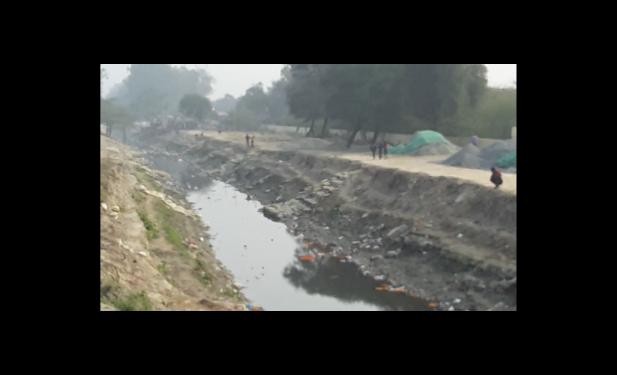Khooni Nahar: How A Polluted Canal Is Disrupting Life In Shalimar Bagh
AVEEK BANERJEE

NEW DELHI: Pollution in various parts of India has been a major problem for a significant period of time. Despite new methods and schemes launched daily for a clean and sustainable environment, the country still reels from this menacing problem. According to a recent report by the World Health Organization (WHO), among the 20 most polluted cities in the world, 13 are in India, with Delhi at the top. In today’s scenario, pollution is shaping up to become the top most killers in the near future.
One such case is the Haiderpur Water Plant, Shalimar Bagh which is located in the north part of Delhi-NCR, which has gained quite a recognition due to a large amount of slum areas and jhuggis present there. One such area, known as the Ekta Jhuggi, located west of the Pitampura Road has come under the scanner due to the presence of a water canal famously termed as the ‘Khooni Nahar’.
Once an efficient canal system with clean drinking water, this canal at present is crammed with garbage and filth. The course has dried up alarmingly in the last few months, leaving little for the residents of the nearby slums to supply their hygiene and water requirements. The pathetic sanitation of the area has resulted in a sharp decline in the quality of water leading to tremendous amounts of sickness and deaths.
“This pitiful condition has been present for the last 8 or 9 years” says Bheem Singh, a resident of Ekta Jhuggi. “People dump all their Pooja materials and waste products in the canal which has resulted in poor quality of water and large number of people falling sick in the slums.”
The situation has seemingly worsened by the Jal Board, which unexpectedly stopped sending water to the canal. Therefore, it has become a breeding ground for deadly diseases like malaria, dengue etc. The nearby slums have been largely affected by this rapid spread of diseases, and people have started looking for alternative sources of water.
Another resident of Ekta Jhuggi, Mohd. Jaffir, a simple rickshaw puller, has been living in Shalimar Bagh for almost 10 years. Clearly demonstrating his annoyance, he says, “I used to be very proud of this canal. The stream used to go from here to all the way to Holy Ganges. Once people started to misuse this area, the Jal Board stopped sending water here and blocked the canal. But the waste compilations continue to grow.”
Nishan, a 12-year old boy, comes daily to this canal to clean up as much filth as possible. Exasperatingly, he says, “Only the people are to be blamed. Not only the people who are responsible, but the people who are ignorant towards this problem.” Nishan also tells that the Jal Board sends water once or twice after long gaps, therefore his parents have to take a long walk to bring home water to feed the family.
According to other sources, the Jal Board occasionally allows water to pass through the canal, maybe once or twice a year. But at the current moment the canal reeks of the urine and excreta and is jammed with all types of waste products. It has almost become a barren area, with 2-3 children playing in the filth.


